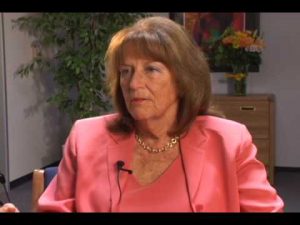After the Honeymoon
 Listen up. Marriage is hard work.
Listen up. Marriage is hard work.
As trumpeted in I Do. I Did. Now What? Life After the Wedding Dress, by Jenny Lee, “There are always plenty of friends to argue the finer points of engagement rings, prenuptial diets, French bustles, and tiara vs. headpiece.” But, the author warns, “Once the band stops playing and the guests go home, you are on your own.” It seems in marriage, like many things in life, the learning is in the doing.
Passionate Marriage author David Schnarch agrees. “Nobody’s ready for marriage,” he writes. “Marriage makes you ready for marriage.” He says successful marriages involve growing and an intimacy-based approach emphasizing “tone” and “depth of connection.”
I know, I know. You want to enjoy the honeymoon, at least, before you’re forced to entertain such sobering truths. But, couplehood precedes marriage, so even before the honeymoon begins, there may be some need to take stock and assess – dare I say, to prepare for a post-wedding reality.
Schnarch says that when it comes to life after the honeymoon, a “more accurate picture (of marriage) simply allows us to anticipate common difficulties and use them to thrive.” But he underscores that “accurate understanding makes it easier, but not easy.” With two people from differing backgrounds living together under one roof, how could it be easy? Meaningful? Yes. Rewarding? Yes. Easy? No.
In fact, wedlock has been wildly romanticized in our modern era. Dating back to at least the Victorian age, arranged marriages were common. Rather than being the product of a passionate, deep, Romeo and Juliet-style love affair, marriage was a way to bring together dynasties and unite families in perpetuity. Even today, in some cultures, arranged marriages are still an acceptable practice. Marrying for love, as natural as it may seem, is a product of latter-day Western mores.
I have been married for over 20 years and have co-parented two sons to voting age and beyond. I have come to see that marriage is a process that becomes more than just the union of two people. It is the creation of a family. It sets before each partner, if tenacious enough, a grand opportunity to live a fully elucidated life, up-close-and-personal with another human being, with all that it entails. Some days with our life partner are excellent; other days are, well, less so. Yet, with more than half of all marriages ending in divorce, couples could take pause, with all they have built together, and work at protecting what has become a vanishing breed: the long-married.
In his book, The Family, famed family specialist John Bradshaw says, “In a healthy relationship, each person is bonded by desire and not out of neediness. Therefore, each is in the process of becoming more or less whole…each helps the other grow by giving up control, criticism, blame and judgment.” Such non-judgment provides each partner a sense of freedom to grow. “With such freedoms (which really amount to being loved unconditionally),” Bradshaw says, “one can accept oneself unconditionally.” On the other hand, dysfunctional families “set up shoulds, oughts and musts by which each member is measured.”
Poet Kahlil Gibran, in his 1923 masterpiece, The Prophet, asks:
And what of Marriage, master? And he answered saying:
Love one another, but make not a bond of love:
Let it be rather a moving sea between the shores of your souls.
Fill each other’s cup but drink not from one cup…
Give your hearts, but not into each other’s keeping.
For only the hand of Life can contain your hearts.
And stand together yet not too near together:
For the pillars of the temple stand apart,
And the oak tree and the cypress grow not in each
other’s shadow.
On an Internet marriage website, blogger Andy Goddard shared that he had read the book Good to Great and learned that the characteristic shared by successful CEOs is humility. The same is true, he thinks, in marriage. “The partners in successful marriages,” he writes, “are both humble, teachable, and willing to learn.”
This willingness to learn may be the secret to a happy marriage: having a broad rather than limited view of a situation, expressing empathy rather than defensiveness, knowing that partnership is less about getting individual needs met, and more about contributing to something greater than oneself – the family. Whether comprised of two members or more, family grounds our daily lives, providing the intricate constellation of our existence. And nothing supports a person’s healthy development more than living within an emotionally intelligent family system. As renowned author Daniel Goleman points out, “current trends in marriage and divorce make emotional intelligence more crucial than ever.”
Goleman’s best-selling book, Emotional Intelligence, states that skills for successful relating include self-awareness; identifying, expressing, and managing feelings; impulse control and delaying gratification; handling stress and anxiety; listening; taking others’ perspectives; and learning to make better emotional decisions. Much of couples therapy involves encouraging each partner to learn and grow within the context of the marriage, so why not discover how to live together with more emotional intelligence from the honeymoon forward and possibly usurp the need for counseling later?
In Awakening the Heart, psychologist John Welwood poses a worthwhile question for married people to ponder:
Is it possible to go more deeply into emotions, go toward them, face them as they are, so that we could allow their energies to expand our sense of what we are? If we could let ourselves feel just what we feel, instead of reacting against it, condemning it, or trying to manipulate and suppress it, perhaps we would develop greater confidence about facing whatever challenges life may present. By cultivating tolerance for our own feelings and softening to one another rather than constricting, healthy marriages have a fighting chance.
This first appeared in Ambassador Magazine, Detroit, Michigan.










Leave a Reply